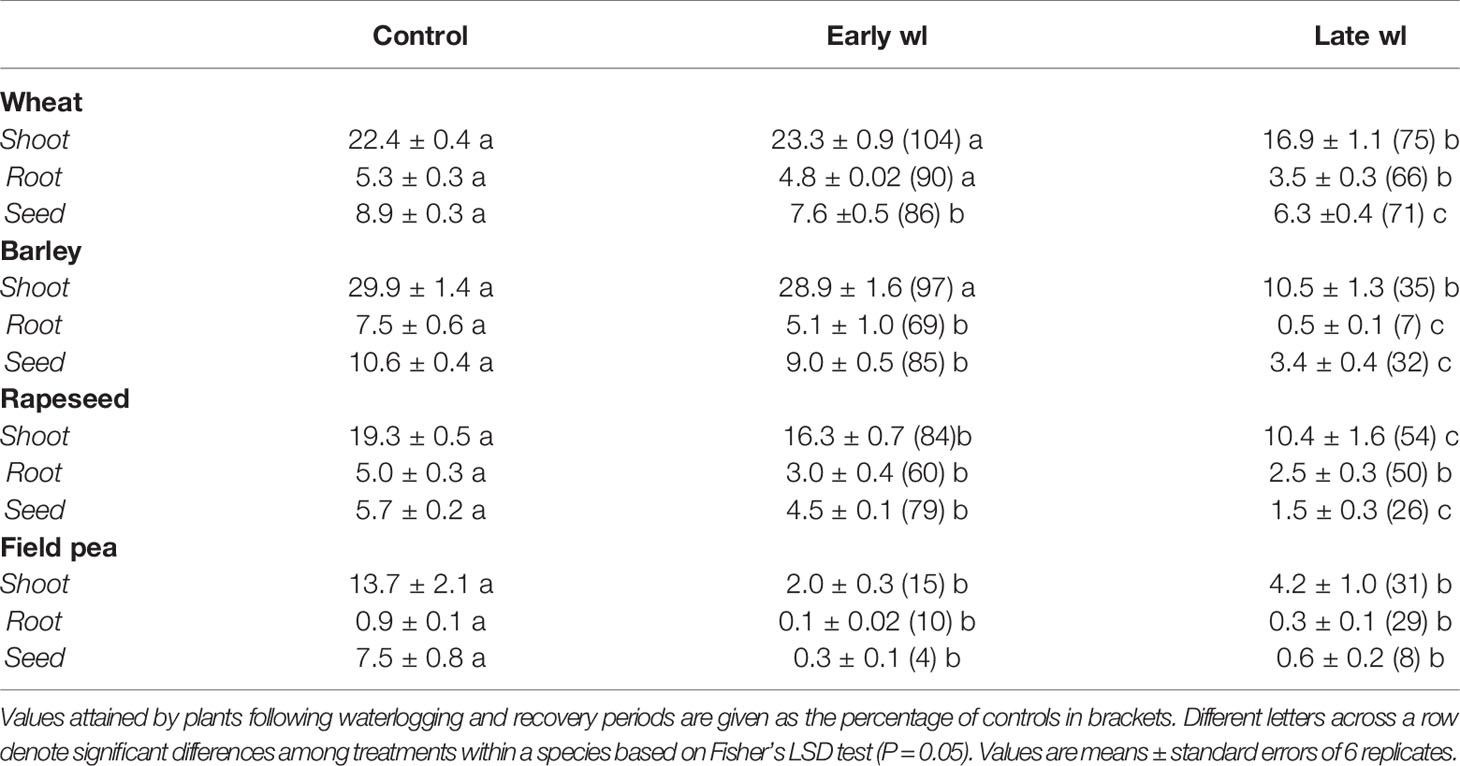
94% of researchers rate our articles as excellent or good
Learn more about the work of our research integrity team to safeguard the quality of each article we publish.
Find out more
CORRECTION article
Front. Plant Sci., 04 February 2020
Sec. Crop and Product Physiology
Volume 10 - 2019 | https://doi.org/10.3389/fpls.2019.01806
This article is a correction to:
Waterlogging of Winter Crops at Early and Late Stages: Impacts on Leaf Physiology, Growth and Yield
 Rocío Antonella Ploschuk1
Rocío Antonella Ploschuk1 Daniel Julio Miralles1
Daniel Julio Miralles1 Timothy David Colmer2
Timothy David Colmer2 Edmundo Leonardo Ploschuk3
Edmundo Leonardo Ploschuk3 Gustavo Gabriel Striker1,2*
Gustavo Gabriel Striker1,2*A Corrigendum on
Waterlogging of Winter Crops at Early and Late Stages: Impacts on Leaf Physiology, Growth and Yield
by Ploschuk RA, Miralles DJ, Colmer TD, Ploschuk EL and Striker GG. (2018). Front. Plant Sci. 9:1863. doi: 10.3389/fpls.2018.01863
In the original article, there was a mistake in Table 3 and legend as published. There were some unintentional errors in the values of the reported shoot dry mass. The corrected Table 3 and legend appears below.

Table 3 Shoot, root and seed dry mass (g per plant) of mature plants of wheat, barley, rapeseed and field pea under control, and after early-waterlogging (Early wl) and late-waterlogging (Late wl) treatments followed by a recovery period.
Further, due to the error reported above, a correction has also been made to the Results section, subsection Dry Mass and Seed Mass Responses Are Affected by Early- and Late Waterlogging, paragraphs one, two, and four:
“In wheat, waterlogging at the early-stage did not impact on shoot or root dry mass, but seed per plant produced was 86% of controls (Table 3). In contrast, late-waterlogging significantly reduced both root and shoot dry mass as they attained 75% of controls, and there was a reduction in seed mass (71% of controls) (Table 3).”
“In barley, early-waterlogged plants attained 69% of controls in root dry mass, but shoots were unaffected. Seed mass of stressed plants represented 85% of controls (Table 3). Conversely, late-waterlogging caused a drastic reduction in dry masses of both roots and shoots (stressed plants attained 7 and 35% of controls, respectively), and these plants produced seed mass about 32% of controls (Table 3).”
“Field pea was the most adversely impacted species by waterlogging. Early-waterlogging provoked great losses of root and shoot mass (plants attained 10 and 15% of controls,respectively) (Table 3). Late-waterlogging reduced these components to 29 and 31% of controls for roots and shoots, respectively (Table 3). Seed production was considerably reduced by both waterlogging treatments, where early- and late-waterlogged plants had only 4.4 and 9.5% of seed mass compared to controls (Table 3).”
The authors apologize for this error and state that this does not change the scientific conclusions of the article in any way. The original article has been updated.
Keywords: waterlogging, crops, aerenchyma, photosynthesis, yield
Citation: Ploschuk RA, Miralles DJ, Colmer TD, Ploschuk EL and Striker GG (2020) Corrigendum: Waterlogging of Winter Crops at Early and Late Stages: Impacts on Leaf Physiology, Growth and Yield. Front. Plant Sci. 10:1806. doi: 10.3389/fpls.2019.01806
Received: 16 December 2019; Accepted: 24 December 2019;
Published: 04 February 2020.
Edited and reviewed by: Johannes Kromdijk, University of Cambridge, United Kingdom
Copyright © 2020 Ploschuk, Miralles, Colmer, Ploschuk and Striker. This is an open-access article distributed under the terms of the Creative Commons Attribution License (CC BY). The use, distribution or reproduction in other forums is permitted, provided the original author(s) and the copyright owner(s) are credited and that the original publication in this journal is cited, in accordance with accepted academic practice. No use, distribution or reproduction is permitted which does not comply with these terms.
*Correspondence: Gustavo Gabriel Striker, c3RyaWtlckBhZ3JvLnViYS5hcg==
Disclaimer: All claims expressed in this article are solely those of the authors and do not necessarily represent those of their affiliated organizations, or those of the publisher, the editors and the reviewers. Any product that may be evaluated in this article or claim that may be made by its manufacturer is not guaranteed or endorsed by the publisher.
Research integrity at Frontiers

Learn more about the work of our research integrity team to safeguard the quality of each article we publish.